Running Injuries: The 5 Most Common Ones and What To Do About It

What runner hasn’t heard the statistics about how frequently runners get injured? Probably not many! In this guide, you’ll find an overview of the five most common running injuries: IT band syndrome, plantar fasciitis, Achille’s heel issues, stress fractures, and runner’s knee. You’ll also find our actionable tips to rehab them if you find yourself in the injured camp. Let’s get started!
How To Avoid Common Running Injuries
IT Band Syndrome

The iliotibial band, or IT band, runs from the outside of your hip to just past your knee on the outside of your leg. It’s one of the most common running injuries out there.
What Does It Feel Like?
- Runners most commonly feel a pulling sensation or intense pain at the outside of the knee.
- The pain can be worse when running downhill, and less severe when going uphill.
How Did It Happen?
- Weak and unstable hips are the biggest culprit here.
- The instability allows the hips tip side to side as you run, putting extra strain on the IT band through the repetition of running.
- This is a slowly building injury, where the pain might go away while running but come back when you stop running, making it easy to ignore.
How Can I Fix It?
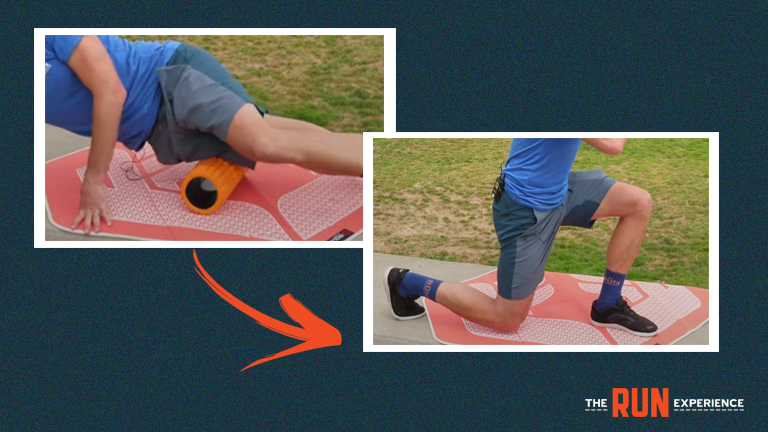
- The IT band itself doesn’t necessarily need rehab. Instead, mobilizing and strengthening the muscles around it will allow the band to move freely and reduce the pain you feel.
- To mobilize, use a foam roller to target the outside of the quads. By rolling out any knots or tight spots you’ll ensure that the IT band itself isn’t adhering to any muscles and is able to glide and flex smoothly when you’re running.
- To strengthen, target your unstable hips with some single-leg movements such as single-leg deadlifts as well as bilateral movements like squats and lunges.
- Focus on engaging and strengthening your glutes to support your hips from another direction. Check out this video below for ideas to target the booty and prevent many types of running injuries.
Plantar Fasciitis, aka Foot Pain

Plantar fascia is the tissues at the bottom on the foot, which can become irritated and painful in runners.
What Does It Feel Like?
- Most likely you’re feeling pain in the bottom of your foot, either under the heel or the arch of your foot.
- The pain can be most intense at the start of the day when your muscles are cold and stiff.
How Did It Happen?
- As you run, very small tears are made in the tissues of your feet and ankles—the plantar fascia. As those tears heal, they can get stiff and stuck together, almost like scar tissue.
- Those stiff tissues cause tension to build up in the bottom of your foot, which leads to the pain you feel.
- Neglecting to cool down and mobilize after a workout can also contribute to the bottom of the foot feeling stiff and achy.
How Can I Fix It?
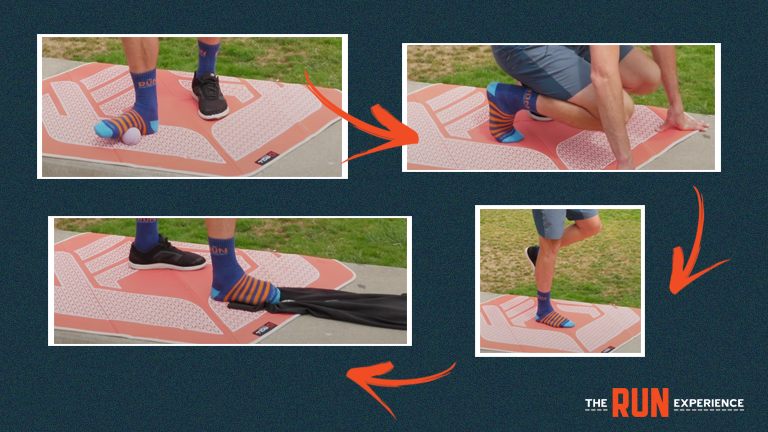
- Rolling out your feet is the first step. With a small massage or lacrosse ball under your foot, press down on the ball and swipe your foot back and forth, side to side to massage the bottom of your foot.
- The massage will help restore flexibility and blood flow to the tissues.
- Try crouching down in a squat, but come up on to your toes to stretch all the tissues that run the length of your foot. You’ll also practice flexing your toes in a greater range of motion than they get when walking or running.
- Come into a single-leg balance to help strengthen your ankle, foot, and arch of your foot. Building strength in all three will help with your balance and stability, which is always great for a runner.
- Lastly, try doing a towel pull. In bare feet, use your toes to pull a towel (or any sort of cloth) toward you. Flexing and extending your toes will not only work your range of motion and strength but also provide extra mobility work for your feet to counteract the time they spend stuffed in a pair of shoes.
Achilles Tendonitis

The Achilles heel is a big connective cord that starts at the back of the heel and runs up to about mid-calf.
What Does It Feel Like?
- Runners suffering from Achilles tendonitis will feel pain in the back of their ankle, right over that tender Achilles heel area.
- You might also feel a general tightness in the back of the ankle that can be tender to the touch.
How Did It Happen?
- It’s possible you ramped up your mileage faster than your body could adapt to.
- Adding in extra hill work can result in tight calf muscles, which then pull on that Achilles heel.
- Just like the plantar fasciitis issues, you’ll notice that everything is connected and tightness or weakness in one area can cause problems in another.
How Can I Fix It?
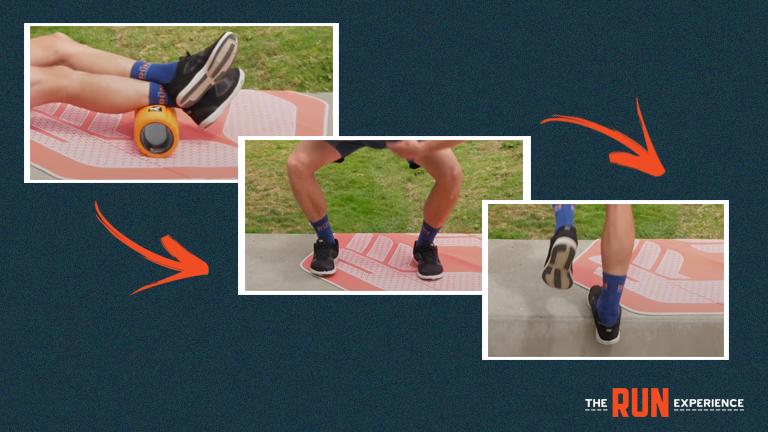
- Again, spending time rolling out the bottom of your feet will make a big difference in preventing and rehabbing Achilles tendonitis type pain.
- Spend extra time rolling out the calves to provide some slack in the ankle and preserve your range of motion. Remember to hit the outer and inner sides of the calves to make the biggest impact.
- Strength training will help build stability through the hips, quads, and feet with movements such as squats and calf raises.
- A calf raise provides an isolated opportunity to strengthen your calf muscles and feet. You’ll also be moving your ankles through their full range of motion
Even coaches go through Achilles heel pain sometimes! Coach Nate filmed a 2-part series about his own journey with Achilles tendonitis. Check it out and learn more about how to treat yourself.
Stress Fractures
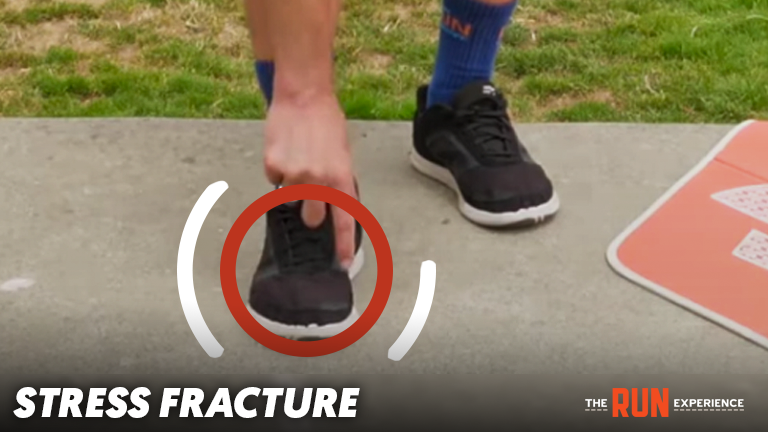
This injury isn’t contained to one part of the body. It varies from runner to runner and requires medical attention.
What Does It Feel Like?
- Likely you’re feeling a nagging pain that lingers and doesn’t go away even after using the mobility and strength tips you’ve ready about so far.
- Most commonly, stress fractures happen in the feet, but can also occur in the femur or the pelvis.
How Did It Happen?
- This is a prime example of how piling on the training without taking time for strength training, mobility, and recovery can do more harm than good, resulting in overuse injuries.
- Stress fractures don’t typically come out of nowhere—they arise from ignoring the warning signs that your body is sending out.
How Can I Fix It?
- Unfortunately, time off is the only real way to heal an injury that has progressed all the way to a stress fracture.
- This is a time to see a medical doctor for an evaluation. Physical therapy might be the recommended course of action after consulting with your doctor.
- Often, 4-6 weeks of non-load bearing movement is the only way to go.
- Avoid depending on anti-inflammatories and ice to “heal” a stress fracture. Instead, focus on changes you can make to your routine and time-management to integrate short strength and mobility workouts.
For an in-depth discussion on the difference between running pain and injury, tune in to this conversation between Coach Nate and Dr. Kelly Starrett.
Patellofemoral Pain Syndrome, aka Runner’s Knee
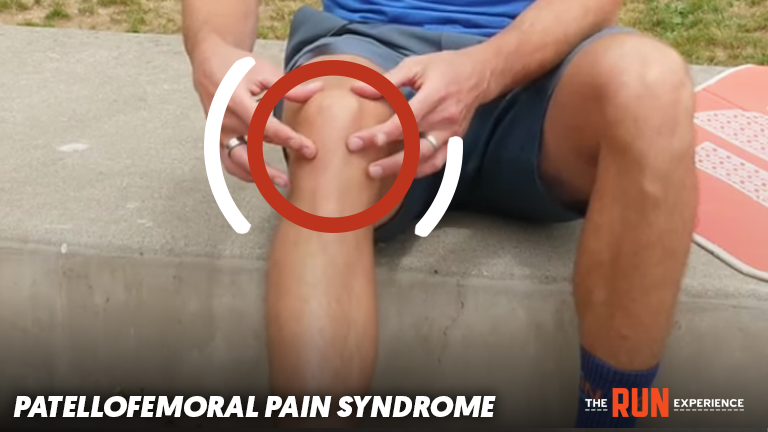
A catch-all term, runners’ knees can describe any general knee pain that shows up under loaded movement, whether that’s just the impact of running or under added weight while strength training.
What Does It Feel Like?
- In this case, knee pain can occur when running, most commonly up or downhill, or when moving your body weight up or down a set of stairs. Additionally, you might feel pain when moving through a squat, lunge, or another movement that takes the knee through a full range of motion.
How Did It Happen?
- The kneecap is meant to track evenly through its groove between femur and tibia. But, if one part of your leg is tighter than another part, such as your outer quad being extra stiff and tight, it can pull on the kneecap and cause it to run unevenly in that groove.
- After a while, the repeated rubbing will cause irritation and pain in the knee.
How Can I Fix It?

- While ice and anti-inflammatories will ease the symptoms, it won’t fix what caused the injury in the first place.
- For that, strength and mobility will again be your best tools for rehabbing and preventing this running injury.
- Foam rolling the quadriceps will loosen up the muscles that may be pulling on the kneecap. Spend time on the outer, central, and inner portions of the upper leg for the most benefit.
- An exercise called the couch stretch is a great way to stretch the quads after rolling them out. As a bonus, this movement will provide a nice stretch to your hip flexors, which tend to be stiff in runners as well.
- For strength training, hitting the posterior chain, or the back of the body, is a great way to balance out the load that the front of the body, namely, the quadriceps, is taking on.
- Use deadlifts or single-leg deadlifts to target the glutes and hamstrings, the two powerhouse muscles of the posterior chain.
Watch this video with Coach Nate to learn even more about runner’s knee.
How Can I Prevent Running Injuries In The Future?
Through all of the above descriptions of common running injuries, you’ll notice a recurring theme of connection. Every part of the body is connected, so when one piece is weak or tight, it will eventually end up affecting another piece. To prevent this from happening, it’s important to be proactive and add regular warm-ups, strength training, and mobility work to your training schedule.
- A thorough warm-up will give your body a chance to get ready for exercise. You’ll loosen up your joints, increase blood flow to your muscles, and prepare your nervous system for the (beneficial) stress of training.
- If you’re not sure how to warm up, check out this great follow along routine with Coach Holly.
- Strength training just twice a week provides the opportunity to strengthen your hips, glutes, quads, and feet. Targeting these areas will help avoid most of the injuries mentioned here.
- Read this article for ideas for no-equipment-required strength workouts you can do at home!
- Regular stretching and mobility work, ideally after every workout, helps preserve your range of motion, reduce soreness, and stay ahead of any build-up of sticky tissues that could restrict your movement or flexibility and result in an injury.
- Injury prevention doesn’t have to detract from your training, either. You can get a full-body stretching and mobility routine in just 15 minutes. Follow Coach Kirk as he hits all the major muscle groups most prone to tightness and restriction in runners.
I’ve Got An Injury Not Mentioned Here
Not to worry! Our brand new program, the Injured Runner Program, has even more information for you. From shoulder pain to shin splints, you’ll find the information you need to get healthy and learn about your body. Even better, the Injured Runner Program has programming for you whether you’re freshly injured and unable to train, or if you’ve made rehab progress and are looking to transition back into your full training schedule. Follow along in our mobile app and learn how to treat yourself!
Coach Nate has all the details in this video:
